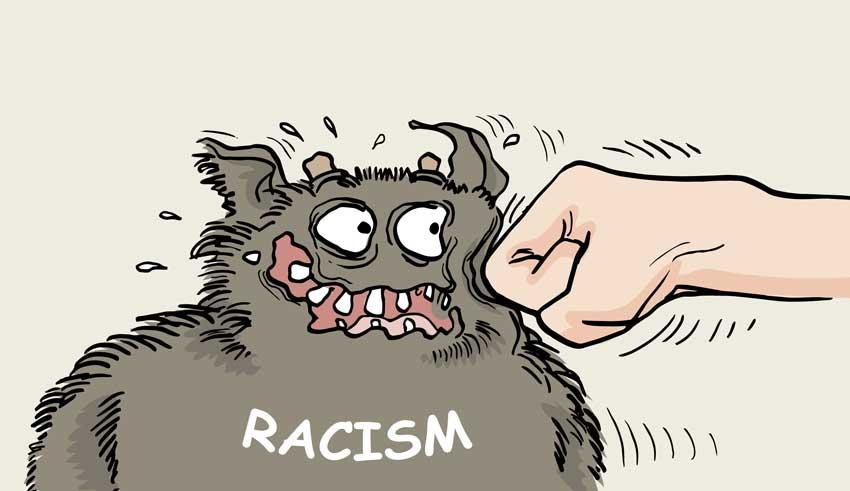13 Mar 2021 - {{hitsCtrl.values.hits}}

In Sri Lanka racial discrimination has led to a 30-year civil war with the death toll reported to be more than 100,000. Independent analysts believe its roots started in 1951 when the ruling United National Party’s (UNP) front-liner SWRD Bandaranaike resigned and crossed over with several of his close associates to form the Sinhala Maha Sabha. Thereafter he formed the Sri Lanka Freedom Party (SLFP). On the issue of language, the SLFP originally espoused the use of both Sinhala and Tamil as national languages, but in the mid-1950s it adopted a “Swabasha” (native language) policy. He said the basis of the party would be the ‘Pancha Maha Balavegaya’ - Five Great Forces - which consisted of the Buddhist clergy, native doctors, teachers, farmers and workers. With like-minded parties he formed a coalition named the Mahajana Eksath Peramuna (MEP) In the 1956 general elections the MEP won a landslide victory with a two-thirds majority in Parliament and Mr. Bandaranaike was invited by the Governor General to form a government as the fourth prime minister of Sri Lanka in April 1956. He formed his Cabinet with a collection of senior members of the parties that made up the MEP and several independents.
One of Mr. Bandaranaike’s most notable actions was the implementation of the Sinhala -Only Act, making Sinhala the sole official language of the country, downgrading the official status of English and promoting socialist, non-Western policies that profoundly changed the course of Sri Lankan politics in the following decades. He is also remembered by the minority Sri Lankan Tamils for his failure to use the State’s resources to control the 1958 riots, leading to the deaths of many Tamil citizens at the hands of mobs. The government declared a state of emergency on May 27, 1958 after six days of riots. The Tamil Language Special Provisions Act was passed to mitigate the effects of the Sinhala Only Act.
After the riots Mr. Bandaranaike apparently realised his mistake and held talks with the then Federal Party leader SJV Chelvanayakam. But the Sinhala-only group apparently got a monk to shoot Mr. Bandaranaike at point blank range and he died on September 26, 1959. He was succeeded in July 1960 by the so called “weeping widow” Srimavo Bandaranaike. The Sinhala-only policy continued and with adoption of the district quota system for university admissions, armed Eelam groups came to the fore. After the 1983 racial riots the civil war erupted.
These factors come to mind as we join the United Nations in marking the International Day for the Elimination of Racial Discrimination on March 21. The 2021 theme is “Youth standing up against racism”.
In a statement the UN says it engages the public through #FightRacism, which aims to foster a global culture of tolerance, equality and anti-discrimination and calls on people to stand up against racial prejudice and intolerant attitudes. Young people massively showed their support at the 2020 Black Lives Matter marches, which drew millions of demonstrators worldwide. On the streets, groundswells of youth -- mostly teens and twenty-somethings -- came together to protest against racial injustice. On social media, they mobilised participation, calling on their peers to speak out, and to stand up for the equal rights of all.
Their activism was all the more remarkable in the context of the COVID-19 pandemic, which saw restrictions on public gatherings in many countries. As the virus began to spread in early 2020, a parallel pandemic was unleashed -- of hatred, violence and fear against certain ethnicities and nationalities. It quickly became clear that stark inequities, sometimes rooted in racism, had subjected minorities to a significantly higher risk of infection and death. COVID-19 has heavily impacted young people, including those from minority backgrounds. Many are now grappling with an increase in racial discrimination, in addition to severe disruptions to their education; diminished employment prospects and a limited ability to participate in public life.
We hope that Sri Lanka’s youth—Sinhala, Tamil, Muslim, Burgher or whatever community will come together because unity in diversity is the only way to sustainable eco-friendly development.
As one of the world’s greatest statesman Mahatma Gandhi has said, “Our ability to reach unity in diversity will be the beauty and the test of our civilization” or as the famous blind and deaf activist Hellen Keller has said, “Alone we can do so little; together we can do so much.”
29 Nov 2024 4 hours ago
29 Nov 2024 5 hours ago
29 Nov 2024 6 hours ago
29 Nov 2024 6 hours ago
29 Nov 2024 7 hours ago